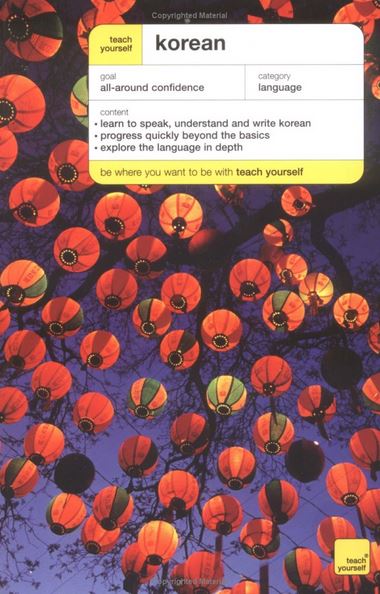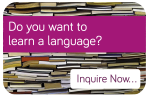As the title suggests Teach Yourself Korean is designed for self-study learners. This textbook is specially designed for beginners to help them gain a grasp of the language via 13 chapters of study. The book also includes a translation of all of the dialogues, answers to the exercises, Korean to English vocabulary and vice versa. The introduction explains how the authors have taken a different approach with this book to make it stand out from the numerous other beginners Korean textbooks; they have focused on real-life situations and dialogues, with colloquial phrases and colloquia language use. Furthermore, rather than using grammatical terminology they have used a comparative method using English to show how both languages have similarities as well as differences.
"The book starts with an introduction to Korean; the main message appears to be that Korean is difficult, but very rewarding to learn. Some of the facts are quite surprising to hear, such as how it is the eleventh most spoken language worldwide in regard to native speakers."
The book starts with an introduction to Korean; the main message appears to be that Korean is difficult, but very rewarding to learn. Some of the facts are quite surprising to hear, such as how it is the eleventh most spoken language worldwide in regard to native speakers. The history of the Korean alphabet is explained, this is largely focused on 1446 and the efforts of the then King, Sejong, who commission research into making a writing system which led to the creation of Han’gul, the Korean alphabet. The book then continues to talk about the alphabet in detail, how to write it, pronounce it and how different characters are put together along with exercises to support your study.
There is a section which explains the Romanization of Korean and how it has been used in the book, followed by pronunciation. Unfortunately, this pronunciation section suffers from being a bit too detailed, although it does include exercises to help support what they are trying to explain, I think it’s always better in a beginner book just to present the sounds of the language as simply as possible. Many teachers argue it is important for the student to be as accurate as possible from the beginning, but I fail to see how detailed and complicated explanations result in learners who speak accurately from day one. Finally we are advised on how to use this textbook and how each chapter uses the same pattern of introduction, dialogue, phrases and expressions, and vocabulary. The authors suggest listening to the CD often to try and bear with grammar explanations and to complete all of the exercises.
The first chapter is entitled ‘Where are you off to? / Cheers!’ and a small introduction explains what the student will learn before leading straight into a dialogue. It is written entirely in Korean, and below it is written again in Romanized Korean, however there is no English translation (as previously explained all translations of dialogues can be found towards the end of the book). There is a list of phrases and expressions, and a list of vocabulary, which you must use to decipher the dialogue and answer several questions about it. Next we are presented with a grammar section, this may be a bit overwhelming since this section consists of four and a half pages of English text explaining the usage of names, verbs, polite language, subject, word order and how to be able to talk about actions. There are no exercises, nothing to break up paragraph after paragraph of English and therefore this section is not very student friendly. The second half of the first chapter follows this same pattern with a dialogue, questions about the dialogue, a list of Korean phrases and vocabulary and again a long winded explanation about grammar. The chapter ends with 8 exercises which include translating sentences, writing sentences including certain grammar and reading some simple Korean words. Overall the first chapter is heavy on explanations and quite light on actual workload.

Students will notice that all of the chapters follow this same pattern. It is almost like the authors focused on the concept of explaining Korean to someone without access to a teacher or a class, to the point of neglecting the simple fact that even a self-study learner needs to be constantly challenged in order to become mentally involved with the language. It is too easy just to sit back and read through the book, make a halfhearted effort with the few exercises, and complete the lessons. however if someone only intends to learn a tiny bit of Korean but also learn a lot about Korean grammar and culture then it is quite a suitable book. It certainly does provide a good introduction from which students can go on to tackle a proper beginner Korean class, but on its own, students won’t gain a great deal from it in terms of being able to use the language.




